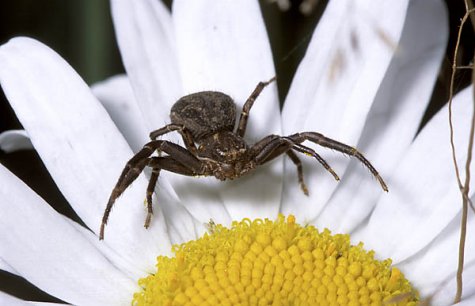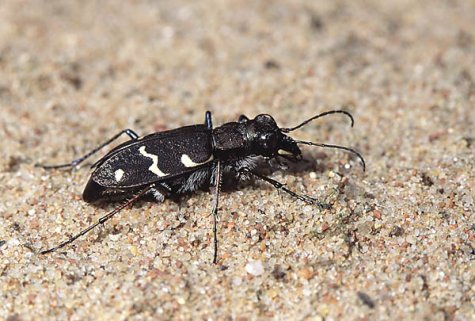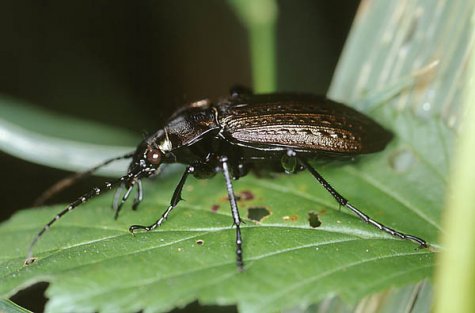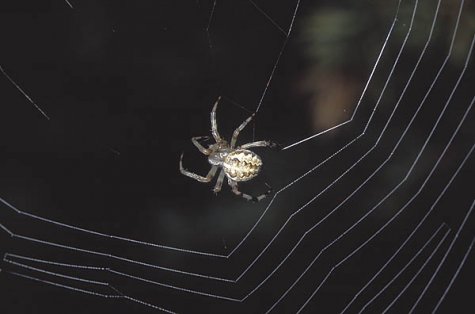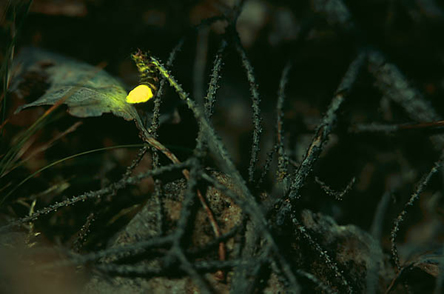Field guide to small creatures
Text Urmas Tartes
Photos Urmas Tartes and Arne Ader
Translation: Liis
Crab spider waiting for prey (Photo Urmas Tartes)
Bugs, insects and other creepy-crawlies or Brief field guide to small creatures.
In summer there are always all kinds of tiny creatures around us. Regardless of whether we see a crab spider peering out of the bouquet of flowers presented to our beloved, a tiger beetle (Cicindela sp.) running on a forest path, or a water measurer (Hydrometra sp.) gliding on the water surface we call the tiny moving beings „some kind of bug“.
In particular we see many bugs on Midsummer night because this is the time for people to catch breath in nature from their everyday doings.
Field guide to small creatures
Start at the first paragraph of the determination table. Compare the bug found to the statements in the paragraph. If the statement suits the characteristics of the bug, go to the paragraph in the table where the number or text at the end of the statement guides you. If no suitable statement can be found, start the determination again from paragraph 1.
1. The bug flies. – Correct answer: insect.
2. The bug does not fly. – See paragraphs 3, 4 and 5.
3. The bug has 8 legs. - It is a spider.
4. The bug has 6 legs. – It is an insect.
5. Cannot count the legs of the bug in the dark. – See addendum no. 4
6. The bug glows at (Midsummer) night. – You have met a glowworm.
7. The bug does not glow. – See addendum no. 4.
What do the answers from this little instant field guide tell?
Insect
Usually it arrives to us flying, because it has wings. An insect does not always have to fly. There are insects without any wings. Some insects with wings, for instance ground beetles (Carabidae), fly very rarely. Such insects crawl in the grass or run on the ground.
If the insect does not fly, then the number of legs is one of the surest characteristics to identify it by. After the number of legs – 6 – insects are also called hexapods (hexa - six, poda – foot in Greek).
If 6 is divided by 2 the result is 3, which is also an important number for insects. The body of an insect is divided into three sections – head, thorax and abdomen. Antennae, eyes and mouth are located in the head. Wings and legs are attached to the middle, thorax. Although the rear, the abdomen, is the largest body part of an insect, there are generally no appendages to be seen on it from outside. Inside the abdomen vital life processes take place such as digestion of food and production of sexual cells.
Spider
A spider consists of two connected round or oval balls. The first, smaller ball is called the cephalothorax. In the front of it there are eight eyes and a mouth. On the underside of the cephalothorax 8 legs are attached. The rear, larger ball is the abdomen. At the rear of the abdomen there are glands, spinnerets, from which the thread for the spider net is extruded. If a spider climbing on a twig is scared, it usually does not immediately fall to the ground but stays hanging by the net thread.
Glowworm
Glowing animals are rare in nature. Splendid then that in addition to the sparks from the Midsummer fire our summer nights are brightened by the glow of tiny dots of light. The female glowworm glows. She has no wings but has six feet – thus clearly an insect.
Addendum no. 4
By all signs it is just the right time for you to go searching for the Midsummer fern flower!
Translator's note: Estonian original published June 22nd. Here, a belated translation. Hopefully a useful guide for next Midsummer's insect studies.

